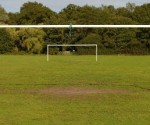Writing Content for Search Engines in 5 Steps [PART 2]
2011 seems to have been the year that many woke up to the fact that search and content are the two key battlegrounds of digital marketing. They are the starting point in the user journey and put simply; search engines are the first place people go for information, so ensuring you have great content with relevant, high-authority links is vital to win the online content battle.
This realisation has had a big impact on organisations and many now know if they want their content to have the best chance of being shared, commented upon or ‘Liked’, Google bots needs to be more than an afterthought. That’s why I have put together the second of a three part guide on writing content for search engines (you can find Writing Content for Search Engines in 5 Steps here).
Before we start it’s worth referencing some best practice examples of organisation winning the online content battle in the form of online publishing powerhouses; the Daily Mail and Huffington Post. The Mail masterfully strike the balance between news, trending content and celebrity gossip to create one of the worlds most popular news sites.Whilst, HuffPo excels at producing excellent news coverage and content people are searching for. Despite the vast editorial differences between these giants of traditional and hybrid media, they both share a similar strategy that has improved search visibility and increased both readership and revenues.
1. Maximise meta description
Meta description is the couple of lines which appear on a Google search below the title. It’s perhaps best thought of as your pitch to readers, as well as Google – and strong meta description can be the deciding factor that gets someone to your website. There is a character limit of 160 to consider, but the principles of writing for both humans and search engines in mind, as well as front-loading with relevant keywords apply here. So make every character count.
2.Keyword URLs
Wherever possible use relevant keywords in web page URLs. This is for two reasons; Google says that it helps SEO efforts and inner pages now rank more frequently for keywords than homepages. Secondly, people will be likely to link to your website using the keyword URL as anchor text; further strengthening the association between your website and particular keywords – all of which increase search visibility.
3. Rename image ALT text
Although the importance of ALT text has diminished somewhat in recent years, it still acts as an effective way to drive traffic to your website and should be considered as part of good SEO practice. Many websites automatically generate a random title for ALT text which is unhelpful. You should amend this to describe primarily what is happening in the image, but also look to incorporate relevant keywords.
4. Use images
Although, the Google search page is constantly evolving, it won’t have escaped your attention that images feature prominently at the top of listings. So if you want your content to score highly on search, images should not only fully be optimized for search, they have to be an integral part of your SEO strategy. It’s also worth noting that search results with images tend to have higher CTRs and lower bounce rates.
5. Utilise SEO plugins
If you’re thinking about re-designing your website I would recommend using WordPress due to its formidable online community of developers who are constantly innovating and improving what has become an industry standard platform. Another reason is that WordPress boasts many fantastic SEO plugins, such as Yoast, All in One SEO and Platinum SEO Plugin all of which can optimize content with relatively little effort.















[…] post originally appeared on Social Web Thing as Part Two in a series exploring search engine optimization and content creation. Part One can be […]